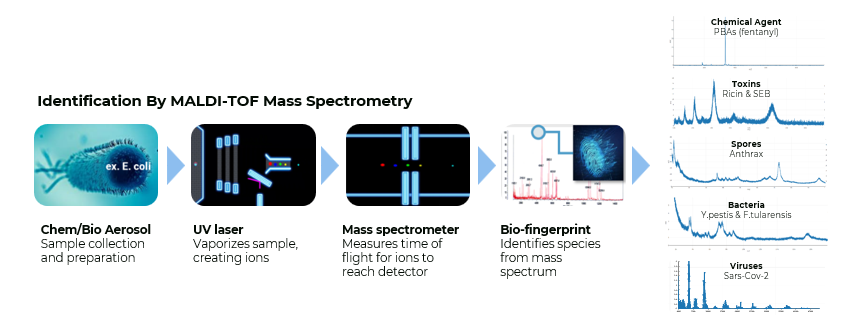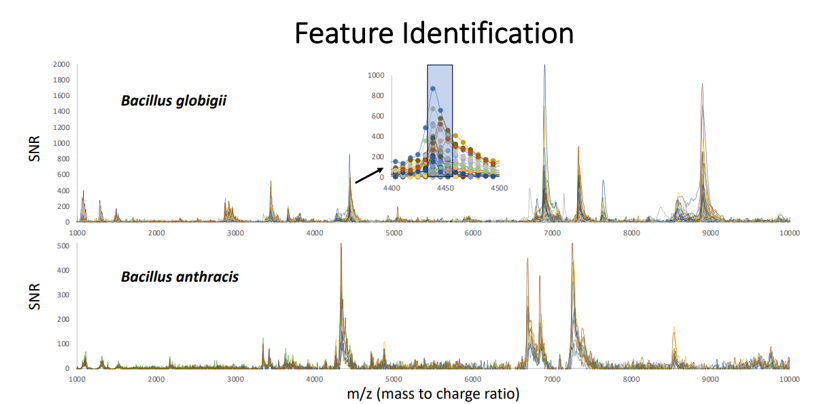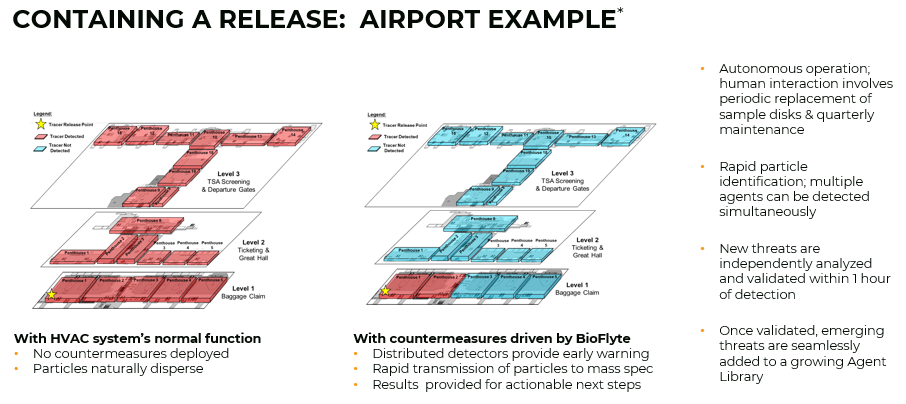The chemical and biothreat landscape has shifted substantially in the 21st century. Over the past twenty years, substance attacks have increased, with the U.S. Postal Inspection Service now reporting 10 suspicious mail incidents per day. It’s become easier than ever for bad actors to produce, transport and distribute chemical and biological threats, which can be created as odorless, tasteless and invisible to detection. At the same time, our world is more interdependent and moves faster than ever, with the global pandemic serving as an emblem of our transcontinental connected network, so the stakes for biothreat security are high indeed.
From transportation hubs like airports and subways, to entertainment venues like stadiums, arenas, and casinos, and to government buildings and financial institutions, protecting vital infrastructure and the people who use it every day is essential. Accomplishing that will require a well-coordinated approach with technology as a key part of it.
From MALDI-TOF to BioTOF
MALDI-TOF mass spectrometry is used in clinical laboratories across the globe for microbial identification. After years of innovation, that technology can now be effectively applied to biothreat detection, a breakthrough first developed by the Applied Physics Laboratory at Johns Hopkins University and brought to market by BioFlyte.

In a biosecurity context, BioTOF technology generates “fingerprints” derived directly from the weight of molecules within a threat organism or toxin. This methodology equips BioTOF with excellent specificity and sensitivity for microbes like bacteria, biotoxins, viruses and spores. In addition, BioTOF features outstanding detection performance for chemical aerosol threats including pharmaceutical-based agents like opioids (such as fentanyl) and bioregulators.
Put succinctly, BioToF replaces trained scientists and complex equipment with autonomous technology including an efficient aerosol sample collector, robotics and an automated sample handling and archiving system, an outdoor environmental enclosure, and artificial intelligence/machine learning spectral analysis. With these, the system detects and identifies both biological and chemical aerosol threats across the entire mass range, from small chemicals to microbes and toxins in a variety of environments.

BioTOF Benefits & Applications
How does BioTOF help? Let’s count the ways:
- Speed – identification within 5 minutes after collection with all bio/chem threats analyzed on same sample
- Accuracy – over 98% true identification without any false positives
- Validation — all positive results have Reachback to scientists
- Adaptability – capability to identify multiple agents simultaneously and add new ones to library within weeks, with unknown and emerging threats detected in real time
- Automation – autonomous operation for 2 – 4+ weeks, with AI/ML classification and cloud-based data management
- Operational Excellence – field deployments with 99% uptime and successful validation through 10+ pilot programs
- Ease of Use – one-day installation time (including an hour-long full user training) and minimal hands-on consumable replenishment thanks to 100 samples per operational cycle
- System Monitoring and Quality Control – automated system health monitoring and sample quality control, with quarterly preventative maintenance included

Where Can BioTOF Help?
The BioTOF™ is an ideal fit for any facility that needs to continuously monitor their environment for chem/bio agents that could endanger the health of people or interrupt the organization’s operations. Whether installed in a high-value room, in HVAC mechanical rooms for facility monitoring, or installed with a self-contained air-manifold system for faster identification times over larger areas, the BioTOF provides facilities the security and insight needed to respond quickly and confidently to aerosol threats.
This includes transportation hubs, such as airports, train stations, maritime ports, bus stations, cruise ships and cargo spaces. Public venues are suitable as well, with arenas, convention centers, concert halls and retail centers all being examples. Commercial buildings, from corporate headquarters to government buildings to embassies, can also benefit from this technology.
In many of these environments, it isn’t just airborne threats that require surveillance. Mail and package screening is important, too; that’s where the MailScreen™ z200 can help. Powered by the same technology as the BioTOF, MailScreen 200 is a fast, accurate and cost-effective threat detection workstation that safely identifies hazardous biological powders in mail and parcels.
Takeaway
Together, BioTOF and MailScreen 200 can provide comprehensive chem/bio agent detection, reducing contamination, improving recovery time, and even saving lives. BioFlyte is adding more capabilities to these products each year, ensuring that as hazards evolve, so does our technology. In an era where the next threat might be something we haven’t heard of yet, that kind of security makes all the difference.
